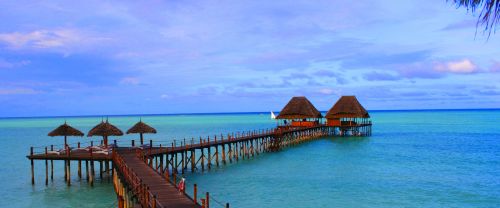Travel highlights Venezuela

Angel Falls
The star attraction of Canaima National Park in the vast Gran Sabana, this is the highest (978 metres) and longest (807 metres) free drop of water in the world. The whole region draws adventure seekers, for exploration of its tannin-dyed rivers and mysterious flat-topped plateaus.
Canaima
In the Guyana region in Venezuela, there is a very impressive National Park, Canaima, with the Tepuis (table-top mountains) with their enormous waterfalls. You can see huge rapids as well as slow majestic rivers running trough the thick jungle. Many of the rivers that cross Canaima national park are navigable throughout the whole year, others are only navigable during the raining season. You can also walk trough the jungle on foot.
Caracas
One of Latin America's most cultured capitals, where you will find vibrant theatre, pulsating salsa clubs, and modern art galleries. It's a city of soaring skyscrapers, but still surprisingly green.
Los Roques
A corner of paradise is how most visitors describe the archipelago of Los Roques. With some 40 islands, pristine white sand beaches and crystalline waters, it is one of the country's most popular yet idyllic hideaways.
Merida
Known as the city of gentlemen, and squeezed between two mountain ranges and two rivers, Merida, is a charming university town which boasts many attractions. The Five White Eagles, are the snow-capped summits, Venezuela's five tallest mountain peaks who form the backdrop to the city of Mérida. Pico Bolívar crowns the group, at 5,007 metres. The city's famous cable car goes to the summit of its neighbour, Pico Espejo.
Morrocoy
The park was created in 1974 to protect its mangroves, sea-bird rookeries and coral reefs, and today is a paradise for snorkellers, divers and birdwatchers. It has a large number of small islands like: Borracho, Pelón, Sombrero, Sal, Playuela y Peraza. Morrocoy´s beaches are excellent. But also, underneath, the corals and fishes show all their beauty to all divers.
Orinoco
The Orinoco is a vast labyrinth of waterways weaving through a simmering jungle to carry the waters of the Orinoco. At its mouth it forms a wide delta that branches off into hundreds of rivers and waterways that flow through 41,000 km² of swampy forests. With the opening of tourist lodges in the interior of this water wonderland, visitors have a chance to observe its abundant fauna and learn about its original and principal inhabitants, the Warao people.
The Llanos
Covering nearly a third of Venezuela, from the base of the Andes to the delta of the Orinoco, the vast plains are occupied only by huge ranches. There are ecotourism camps geared up for safaris. A great diversity of wildlife exists, and the Llanos is most famous for its swamp-based wildlife of Orinoco goose, scarlet ibis, and capybara, as well as a host of migrant species. Flooding is at a maximum between July and October.